Buying a TV in 2024: A Guide to Buying a TV on a Budget
Nowadays, there are so many styles of TV, from QLED to LCD, that it's difficult to keep up. In this article, we discuss the different forms of TV and how they affect the price.
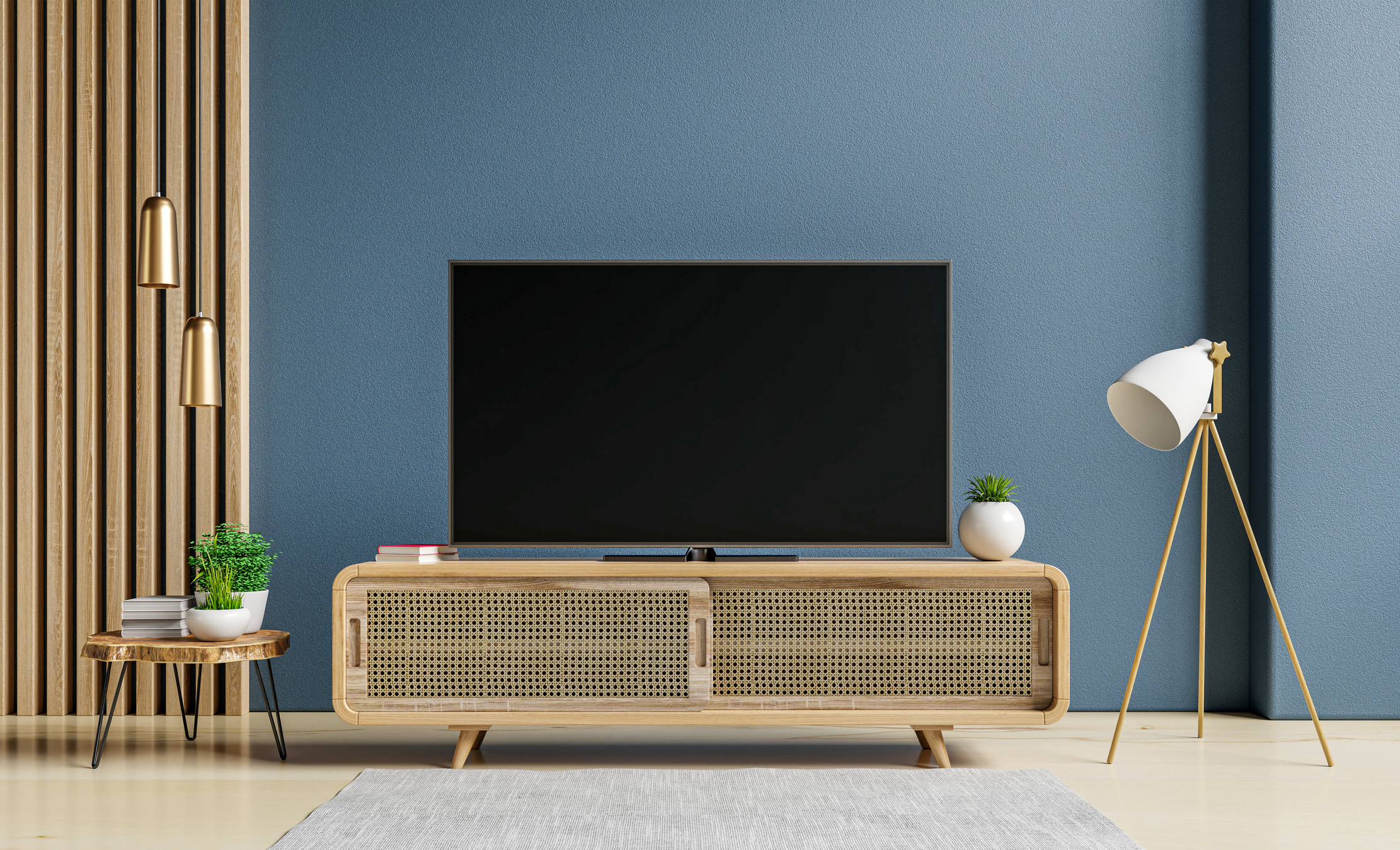
- Should I Buy a Smart TV?
- What is a Smart TV?
- Does a Smart TV need an aerial?
- What Type of TV Do I Need?
- TV Screen Size
- How to measure a TV screen?
- The Different Types of LED TV
- What does LCD stand for?
- What does LED stand for?
- What is an OLED TV?
- What is a QLED TV?
- What is a Neo QLED TV?
- What’s a DLED TV?
- TV Screen Resolution
- What is a 4K TV?
- What is an 8K TV
- What is Ultra HD?
- Is 4K better than UHD?
- What is HDR?
- Conclusion

Nathan Walters
When you click on a link to our discount code page, we may receive a small commission if you purchase something from a retailer's website.
When it comes to buying a TV, it can feel like a minefield of acronyms and technological nonsense. With HDR and OLED, knowing exactly what you’re looking for has become more complicated. While learning a TV is HD-ready used to be enough to sway you, it’s hard to blame someone for not knowing where to start nowadays. So, good news, we thought we’d put together a handy guide to take the stress out of the experience.
From finding the right screen size and deciding whether you need a Smart TV to the differences between 1080p and 4K, we’ve got you covered. So, have a read, and get informed! That way, you can go to those tech stores without worrying about being buried in an avalanche of complicated tech mumbo jumbo.
Should I Buy a Smart TV?
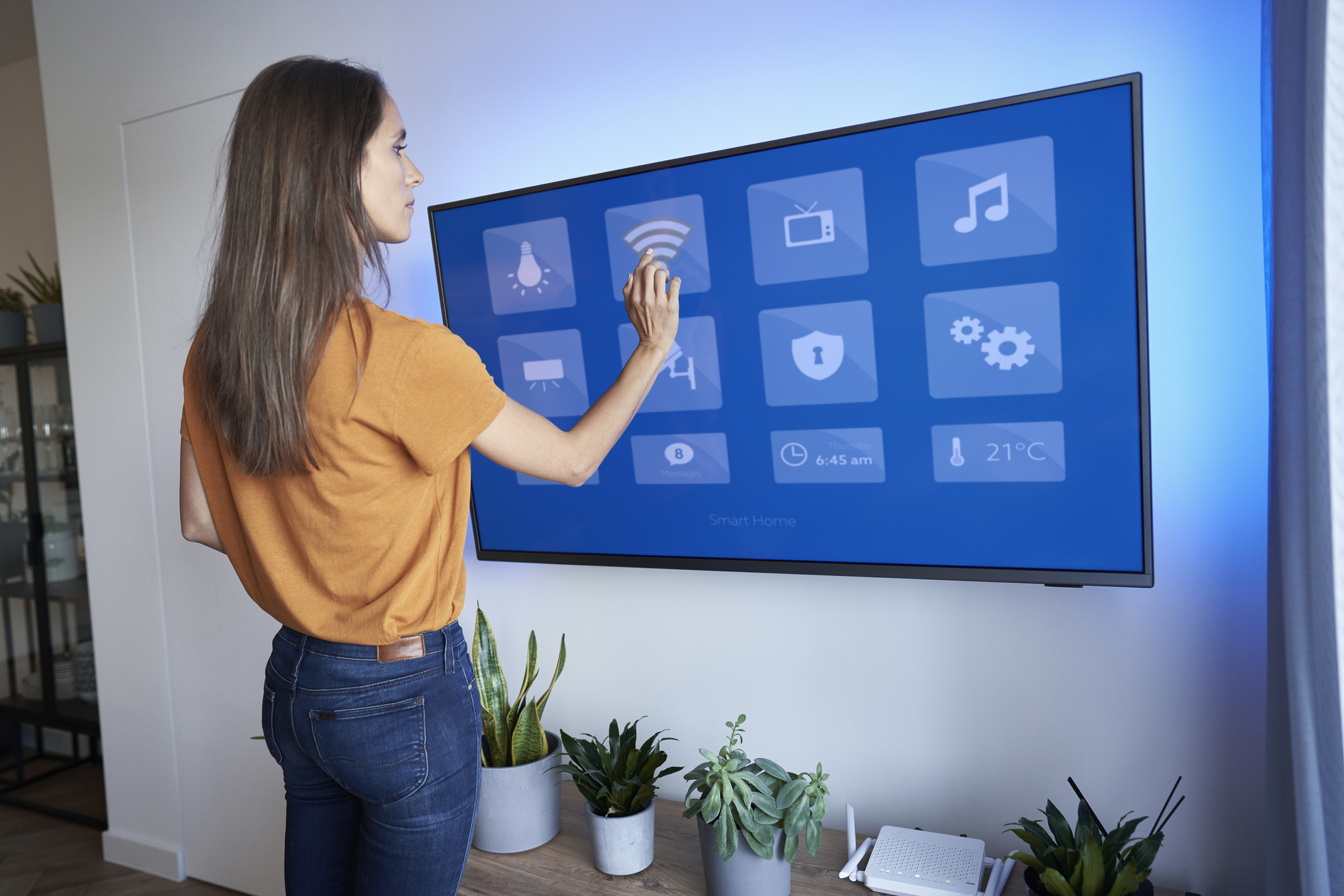
A big question to get out of the way when splashing the cash on a new screen is whether or not to buy a Smart TV. While they’re convenient, is it something you need? Especially when smart capabilities usually mean your new TV has a heftier price tag. But to decide that, there’s one thing we need to get cleared up.
What is a Smart TV?
A Smart TV is a television with internet-connected capabilities. You’ll usually find access to streaming services and other apps, making for a great all-in-one entertainment box. From Netflix and Amazon Prime Video to Disney Plus and BBC iPlayer, you can get all your streaming subscriptions in one place.
However, it tends to cost a little extra at the shop. Although you can get cheap smart TVs, much of the cost comes from the screen's size and resolution. You’ll need to look at your streaming services and decide whether you get enough use out of them to make the purchase worthwhile. You may find the convenience of doing everything from one remote enough to justify splashing the cash.
If you own a Sky box, you may prefer Sky's smart TV, Sky Glass, which has Sky built-in, so all your Sky channels and streaming apps are in one easy place. Don't have Sky? Amazon Firestick users may enjoy the Amazon TV, which has all the features of an Amazon Firestick, including Alexa.
Does a Smart TV need an aerial?
Not really, no. While you’ll need an aerial to watch Freeview channels and terrestrial television, you won’t need it for any streaming services. All you need for that is an internet connection. You can get portable indoor aerials pretty cheap nowadays, so it’s your choice. A Smart TV might suit you if you’re a sucker for some streaming. But it might not be worthwhile if you prefer the traditional means, adverts and all.
What Type of TV Do I Need?
The price and features of the television you should get may vary depending on what you need it for. If you are a huge movie buff and watch regular films alone or with family, you'll want a 4K TV. Luckily, 4K TVs don't break the bank, and you can get a good one for roughly £350 nowadays.
If you're a big gamer, the more frames, the better, with 120hz being the ideal rate, but the higher the refresh rate, the pricier the TV, with prices ranging from £400-1000. I would recommend a monitor for the best gaming experience. They are smaller but have a way higher quality for video games.
If all you do is watch the odd streaming platform, you don't need all the extras, such as OLED TVs or high-tech TVs with quantum dots and Dolby Vision. So consider a small smart TV such as an Amazon Fire TV for £200-250 with built-in streaming apps and full HD.
Have no space but want a TV? Consider a projector. For around £100, you can pick up projectors attached to phones and laptops that display an image on a flat surface such as a ceiling or wall. This is great for small apartments.
TV Screen Size
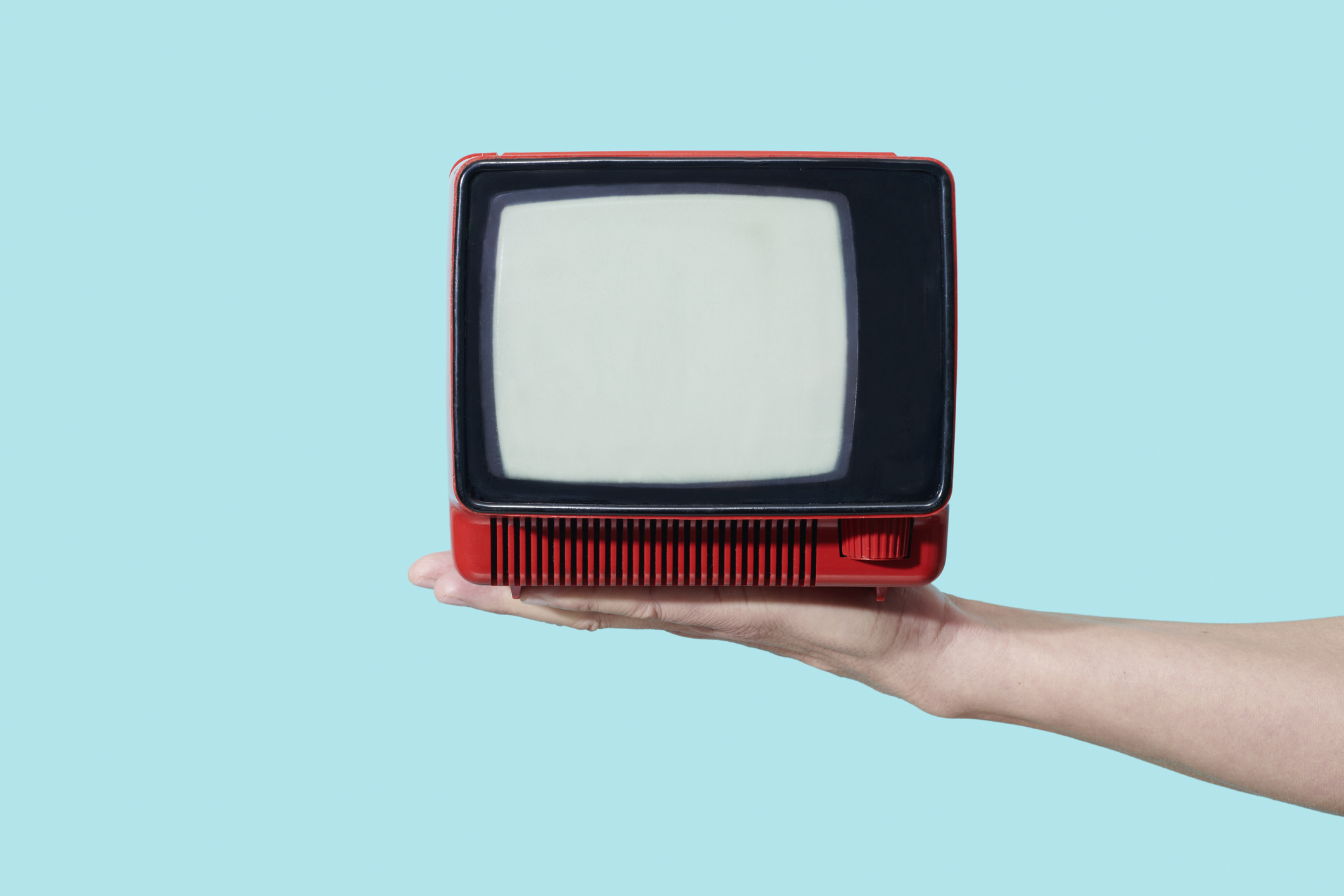
Screen size is a significant factor. It’ll depend a lot on how far away you’re sitting from the screen. If it’s something for the bedroom and you’re relatively close, you might find a 27-inch screen fits the bill. But, if you want the whole family to sit in the living room, something bigger will suit you better. A great way to find out what kind of screen is right for you is with the rtings.com TV size to distance calculator. It uses a bit of science to find the right size TV for you, based on how far away you’ll be sitting.
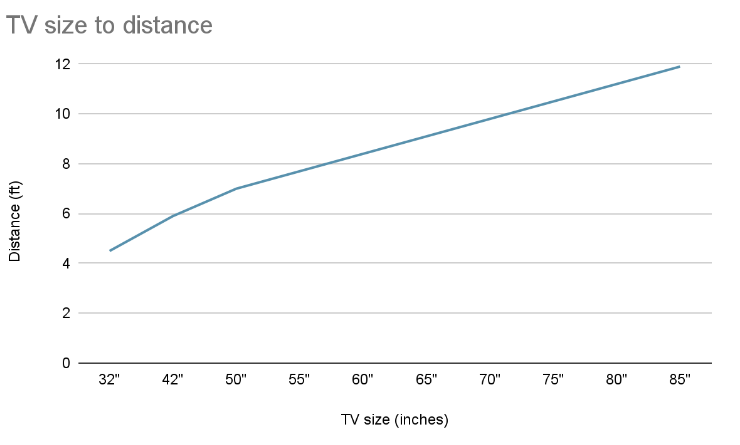
How to measure a TV screen?
You might already have a TV that’s the perfect size, but you want something a little crisper or smarter. In that case, grab a tape measure and go diagonally from corner to corner. Make sure you leave out the borders so you can find out what screen size you’re used to. Then you can head to Currys and ask them for something around that size, and the staff will help you. It also makes the online shopping experience easier when you know what you’re looking for.
The Different Types of LED TV

When we talk about complicated acronyms, this is what we mean. Many TVs are identified as LCD, LED, QLED, DLED or OLED. And yes, it is incredibly irritating seeing these terms pop up when you don’t know what they mean. So, we will give a quick rundown of what it means and the kind of difference it makes.
What does LCD stand for?
LCD stands for liquid crystal display and is one of the earliest forms of flat screen TVs, because of the age of the technology they usually use more energy and are slightly bulkier but are by far the cheapest option on this list. However, if you want better contrast, low input lag and higher resolution, you should probably go for an LED or above, which, despite the higher price point, has the best value because of its lifespan and better picture quality.
What does LED stand for?
LED means light-emitting diodes. So, if you’ve got an LED TV, the screen is lit by a ton of tiny little lights. LEDs can use less power, give a brighter display and take up less space than older LCD TVs. You can still get LCD TVs if you’re looking for a budget option for your new screen. But most TV’s now fall under the LED banner in one way or another.
What is an OLED TV?
An organic light-emitting diode TV is one of the most premium types of TV on the market right now. They can be ultra slim because they don’t use backlights and usually come equipped with 4K (the higher-end models even have 8K) functionality, some of the best picture quality, vibrant colours, smart features and higher contrast. In a nutshell, you’ll be getting incredible quality with an OLED TV.
What is a QLED TV?
QLED TVs are almost the same as OLED TVs. It stands for quantum dot LED, and you’ll likely get a similar effect between the two—great quality! The difference is that QLED TVs usually come from Samsung and are actually typically cheaper than OLED TVs, so it’s well worth looking into if you’ve got your heart set on a brand-new OLED TV.
What is a Neo QLED TV?
Neo QLED, or a neo quantum light-emitting diode, is a proprietary technology from Samsung that combines thousands of tiny LEDs called Quantum Matrix technology. In short, the LEDs are smaller than older generations of TV, so there are more of them, and the more LED, the better the colour.
What’s a DLED TV?
A direct-view LED display means hundreds of tiny LEDs are mounted directly behind the screen. They’re bright, dynamic and offer rich colour. But, the quality may differ slightly from the OLED and QLED counterparts. But that means you can get these TV’s a little cheaper. Perfect if you want that middle ground between cost and quality in your new screen.
TV Screen Resolution
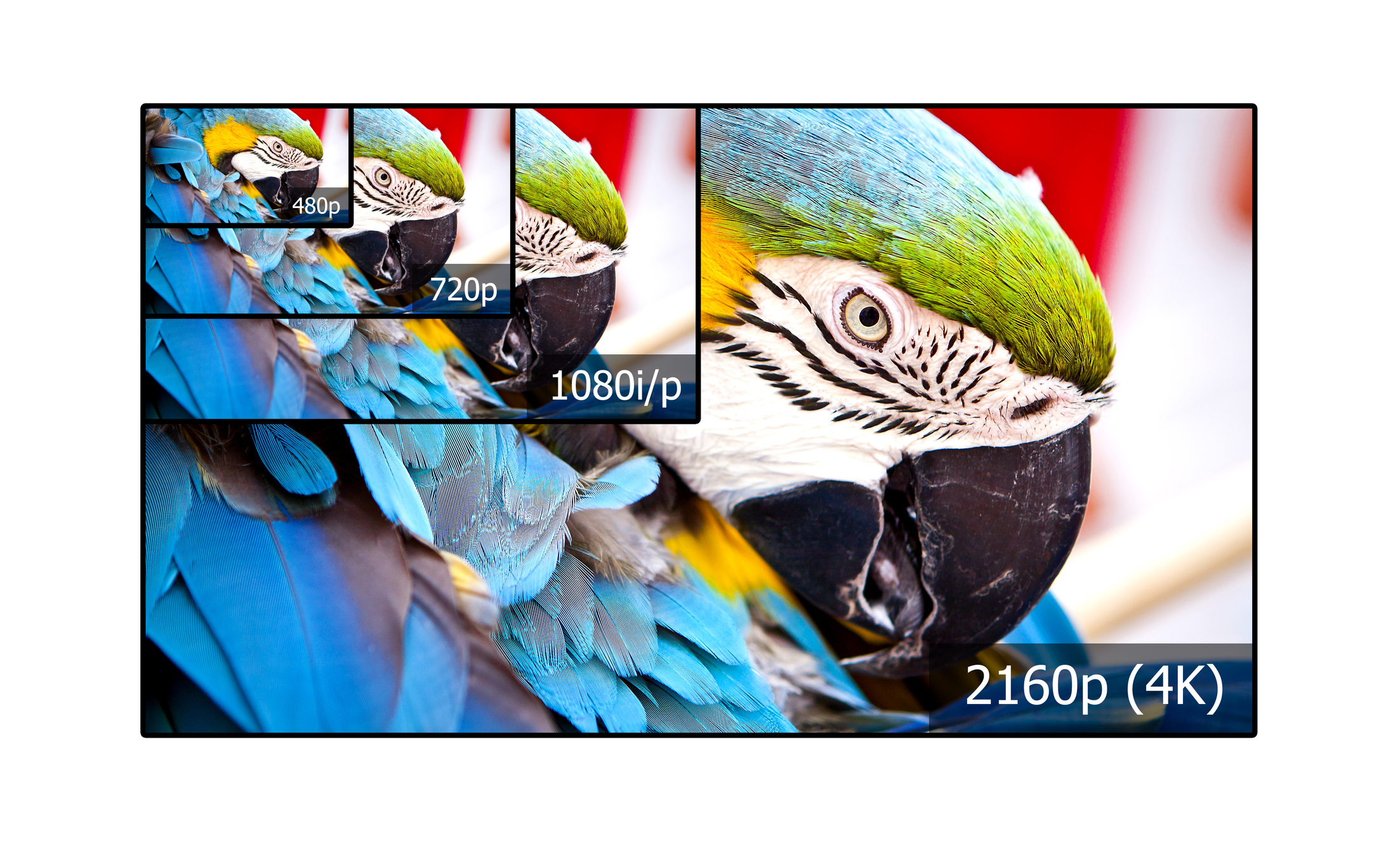
One of the key things to consider when you’re getting your hands on a new TV, is the picture quality. But screen resolutions are yet another minefield to navigate. With terms like 4K, 8K, 1080p and Ultra HD being thrown around, it gets complicated pretty quickly. And depending on your needs, it can make a difference.
What is a 4K TV?
With a 4K TV, you’ll be getting pretty close to crystal clear quality. Generally you’ll find 4K TV’s to be 40 inches or more, as anything under that won’t really let you appreciate the full majesty of that clarity! So, if you’re getting a smaller TV, you might be better off settling for 1080p (full HD). Lately 4K TVs have been getting cheaper and TV manufacturers such as HiSense, TCL and Toshiba have budget-friendly TVs in 4K ultra high definition for under £300. A good choice for your living space without leaving the budget price range.
What is an 8K TV
8K resolution is the latest in viewing technology, with four times the number of pixels a 4K TV has. However, there are practically no movies, shows or games with 8K capability and can cost up to £10,000 so honestly, they aren't worth it.
What is Ultra HD?
Ultra HD or UHD is a term that’s used pretty interchangeably with 4K. But simply put, Ultra HD is a term that applies to the next step up from full HD. So you’ll be getting higher definition with an UHD TV. But bear in mind if you’re watching older content, or playing older games that haven’t optimised for display in UHD, you may find it’s not worth the extra cash.
Is 4K better than UHD?
Generally, with 4K and UHD, you won’t need to worry about which one is labelled on the box, as you’ll be getting a pretty great viewing experience either way. But advertisers do prefer to use the term 4K. But on the whole, the terms are used pretty interchangeably.
What is HDR?
High dynamic range or HDR is used to increase the amount of detail that can be shown on screen. It can make those bright colours brighter and the darker colours darker, and you can get greater detail between those colours. It’s great if you’re a gamer and want all the detail your screen can handle, but it’s also great for those new movie releases. In short, it’s just another term that means you can get crisper quality from your screen.
| Feauture | Advantage | Disadvantage |
|---|---|---|
| HDR | Better contrasts and colour quality | Expensive, and not all games/movies support it |
| UHD and 4K | High-quality image and pixel density, clear crisp viewing | Adds to the price, uses more energy |
| 8K | Unmatched viewing quality | Practically no movie show or game is in 8K. Incredibly expensive |
| 120hz | Very fluid image, great for gaming | More expensive than the usual 60hz TV |
| 60hz | Cheaper than 120hz, good for movies and TV shows | May not be the best option for hardcore gamers |
| DLED | Cheaper than QLED and OLED | The viewing angle is not as good as QLED or OLED and can be chunky. |
| OLED | Slim, better quality than QLED and DLED, premium image quality | More expensive than DLED or QLED |
| QLED | Better than DLED, Great image, cheaper than OLED | More expensive than DLED and not as good as OLED |
Be In-The-Know When Buying a TV
So, we hope that’s cleared up some of the confusion when it comes to buying a new TV. you don't need to be a tech genius to know what you’re looking for. But make sure when it comes to buying a quality screen, you’re getting the best price to boot! Just make sure before you splash the cash, you know exactly what suits your needs.
For more helpful tips and tricks check out our guide to Buying Tech on a Budget

I’ve been a regular fixture here at MyVoucherCodes since 2018. Starting as a deal expert, diligently perusing the web for some serious discounts, I’ve since gone on to write heaps of content as an editor, specialising in home, gardens, and tech. Sharing what I’ve learned so that you can save yourself a few quid on home essentials and the odd luxury.
- Nathan WaltersEditor